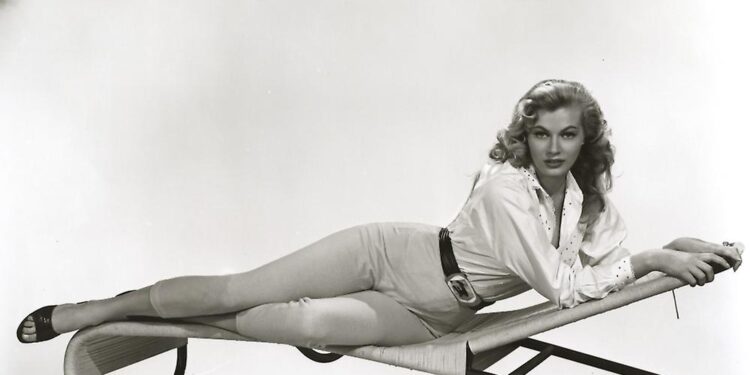In the realm of cinematic masterpieces, Federico Fellini’s “La Dolce Vita” stands tall as a timeless exploration of decadence, disillusionment, and the pursuit of pleasure in post-war Italy. Released in 1960, the film became a cultural touchstone and an emblem of the era’s societal shifts. At the heart of this intoxicating narrative is Anita Ekberg, the Swedish actress whose portrayal of Sylvia, the enigmatic movie star, added an extra layer of allure to the film.
“La Dolce Vita,” translated as “The Sweet Life,” captures the hedonistic spirit of 1960s Rome, a city teeming with affluent lifestyles, paparazzi culture, and existential angst. The film follows Marcello Rubini, a journalist played by Marcello Mastroianni, as he navigates through a series of glamorous and morally ambiguous encounters over the course of a week. Central to the narrative is the character Sylvia, whose iconic scene in the Trevi Fountain has become a symbol of sensuality and decadence.
Anita Ekberg’s portrayal of Sylvia is a masterclass in cinematic allure. As she wades into the fountain’s waters in a strapless black dress, her statuesque beauty and undeniable charisma captivate both Marcello and the audience. The scene is a visual metaphor for the excesses of the dolce vita lifestyle and an exploration of the fleeting nature of pleasure. Ekberg’s presence in the film transcends the boundaries of the screen, etching her into the collective memory of cinema enthusiasts.
Ekberg, born in Sweden in 1931, had a career that spanned several decades, but it was her role in “La Dolce Vita” that catapulted her to international fame. Her collaboration with Fellini showcased her versatility as an actress and cemented her status as a sex symbol of the 1960s. Beyond her striking looks, Ekberg brought depth to her characters, infusing them with a magnetic charm that resonated with audiences worldwide.
While “La Dolce Vita” remains a cinematic milestone, Ekberg’s legacy extends beyond this iconic film. Her career includes collaborations with acclaimed directors such as Frank Tashlin and King Vidor, and she continued to work in the industry well into the 1980s. Despite the passage of time, Anita Ekberg and “La Dolce Vita” remain integral to the cultural fabric of the 1960s, capturing the essence of a bygone era and leaving an indelible mark on the history of cinema.



Recent Comments